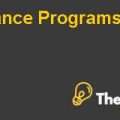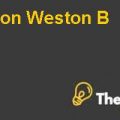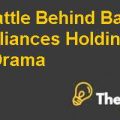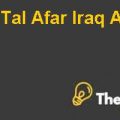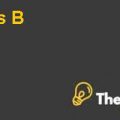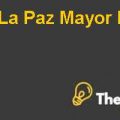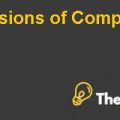ETHICAL AUDIT OF HERSHEY’S
1. Part (A): DESCRIPTION OF THE ORGANIZATION
Hershey’s is a leading and worldwide famous confectionery for chocolates, mints, super tasty snacks, and sweets. As of May 2014, the company held a workforce of 13,000 employees and had more than 80 brands selling under its name. With the exhaustive workforce and huge product range, the company generates $7.1 billion in revenues globally (Hershey, The Hershey Company, 2014). This revenue chunk is accumulated from the iconoclastic brands under Hershey such as Hershey’s, Reese’s, Hershey’s kisses, Ice breakers and Jolly Rancher. Continuing expansion in the North American market, the company is also making efforts to develop strong presence in the international market. Hershey has a core motive of bringing goodness to the society in which it operates, therefore, it is moving broad from confectionery business to other businesses (Hershey, The Hershey Company, 2014).
The company’s online profile says that Hershey wants to bring goodness to the community along with producing delicious products. To contribute more to the community, the operations by Hershey are conducted in a fair, ethical, and sustainable manner in order to produce a positive impact on the society (Hershey, The Hershey Company, 2014). The contribution in terms of the better life for employees, consumers and the society alike along with uplifting a brighter future for the needy children reflects that Hershey is also maintaining issues of Corporate Governance. To add further to Hershey’s contribution to the society, the company opened Milton Hershey School under administration of Hershey Trust Company. The children who are a part of this school receive education, housing and medical care that thrives as direct beneficiaries for the company’s success (Hershey, The Hershey Company, 2014).
a. Company’s Code of Conduct
The company’s code of conduct portrays commitment to operate ethically that would lead to integrity. The company makes sure that everybody, who has a stake in the company’s success, upholds the commitment (Hershey, 2014). There are five elements of code of conduct mentioned below; these are segmented on the basis of various groups that hold share in the company’s success.
1. Commitment to employees: This shows Hershey’s concern for the employees and the employee relations. This ethical conduct says that the employee needs to be treated fair by all means, whether it is about distributive justice or procedural justice (Hershey, 2014). The company and the employees need to foster talent and experience in the organization along with respecting and valuing each other and the shared experience (Hershey, 2014).
2. Commitment to stock holders: The company and its employees need to work out such that helps boost stock holder confidence in the company, and which translates into hard numbers for them. To do this, people at Hershey need to have transparency and honesty instilled in them, which will heighten investor relations in the long run (Hershey, 2014).
3. Commitment to consumers: At Hershey, the consumer is considered the one, who has the company’s fate in his hands. Hershey’s consumers have trust in the quality of items they produce (Hershey, 2014). Therefore, to retain customer relationship management, people at Hershey need not to compromise on quality and adhere to fair and honest marketing techniques for communicating the brand (Hershey, 2014).
4. Commitment to market place: Following the legal procedures and withholding relations with every business partner in the loop is Hershey’s utmost priority (Hershey, 2014). In addition, the partners their fair share in profits will motivate them to make Hershey thrive more in terms of profits.
5. Commitment to the society: By complying with all the international laws from where the company imports raw material to where the company sells and exports its end products will help the company to be legal in every possible manner (Hershey, 2014). Moreover, the use of the natural resources, which is non-renewable need to be rational and sufficient for the generation at present and the generation to come in future (Hershey, 2014).
2. Part (B): DESCRIPTION OF ETHICAL RISKS AND GAINS
a. Ethical Risks
- Opportunities for Rationalization
- Child labor and Slavery
- Ethical fading
- Employee exploitation
- Ignorance in implementing Fair Trade practice
- Human rights violation
- Hedonic consumption leading to profits.
- Trend setter in the industry as an affordable luxury.
- Enjoy strong sales despite recessionary conditions.
- Growth is tremendous in this sector with new product innovations every now and then.
- Trend of associating gifts with chocolates, which paves way for franchising opportunities along with female consumption of 91% and male of 87% (Matt, 2014).
b. Ethical Gains
c. Organizational Productivity Drivers
These are the major organizational productivity drivers for Hershey Company:
- Opportunities seized as there is no better substitute available to sugar added products. This helps Hershey in enjoying healthy financials with gross margin of 3.6 percentage points as of FY13.
There international expansion has also helped the company ..................
This is just a sample partial case solution. Please place the order on the website to order your own originally done case solution.

